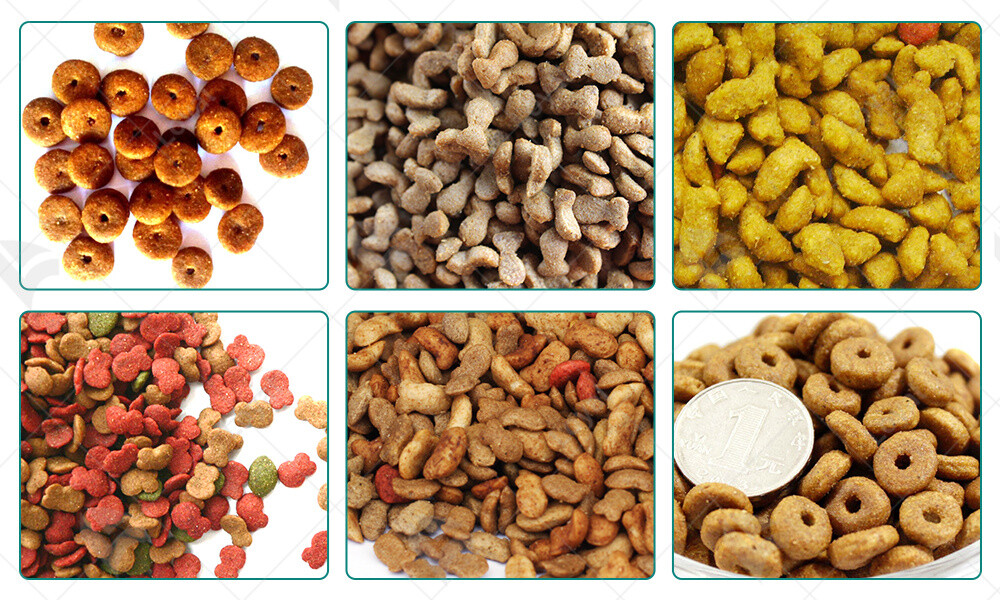The Ultimate Dog Food Production Line Guide to 2024
Introduction to Dog Food Production Line Technology
Dog food production lines represent the pinnacle of technological advancement in the pet food industry. These lines are meticulously designed and engineered to efficiently produce high-quality dog food on a large scale while ensuring consistency, safety, and nutritional integrity. In this section, we will delve into the intricate workings of dog food production line technology, exploring its key components, functions, and importance.
Dog food production lines comprise a sophisticated array of machinery and equipment specifically tailored to handle various stages of the manufacturing process. From ingredient mixing and blending to extrusion, drying, and packaging, each step is meticulously orchestrated to deliver nutritious and palatable dog food products. These production lines are characterized by their automation, precision, and efficiency, enabling manufacturers to meet the growing demand for pet food worldwide.

Overview of Dog Food Manufacturing Processes
The manufacturing processes involved in producing dog food are multifaceted and require specialized equipment to ensure optimal results. Let's take a closer look at the key stages of dog food manufacturing within a production line:
1. Ingredient Handling and Preparation: The production process begins with the handling and preparation of raw ingredients such as meat, grains, vegetables, and supplements. These ingredients are carefully selected and processed to meet specific nutritional requirements and quality standards. Automated systems are employed to weigh, measure, and mix ingredients accurately, minimizing human error and ensuring consistency.
2. Mixing and Blending: Once the ingredients are prepared, they are combined in precise proportions to create a homogeneous mixture. Mixers and blenders equipped with advanced technology are utilized to achieve thorough blending and uniform distribution of nutrients throughout the mixture. This step is crucial for achieving consistent product quality and nutritional balance.
3. Extrusion: The mixed ingredients are then subjected to extrusion, a process where the mixture is forced through a die under high pressure and temperature. This results in the formation of a dough-like mass, which is then cut into specific shapes and sizes. Extrusion not only cooks the ingredients but also enhances their digestibility and palatability, making the final product more appealing to dogs.
4. Drying: The extruded product undergoes drying to remove excess moisture and achieve the desired texture and shelf stability. Various drying methods, such as hot air drying or drum drying, may be employed depending on the characteristics of the product. Proper drying is essential to prevent spoilage and ensure product safety during storage and transportation.
5. Packaging: The final step in the manufacturing process is packaging, where the dried dog food is carefully sealed in bags or containers. Packaging plays a crucial role in preserving the freshness and quality of the product, protecting it from contamination, moisture, and other environmental factors. Advanced packaging solutions, such as vacuum sealing and nitrogen flushing, help extend the shelf life of dog food and maintain its nutritional value.
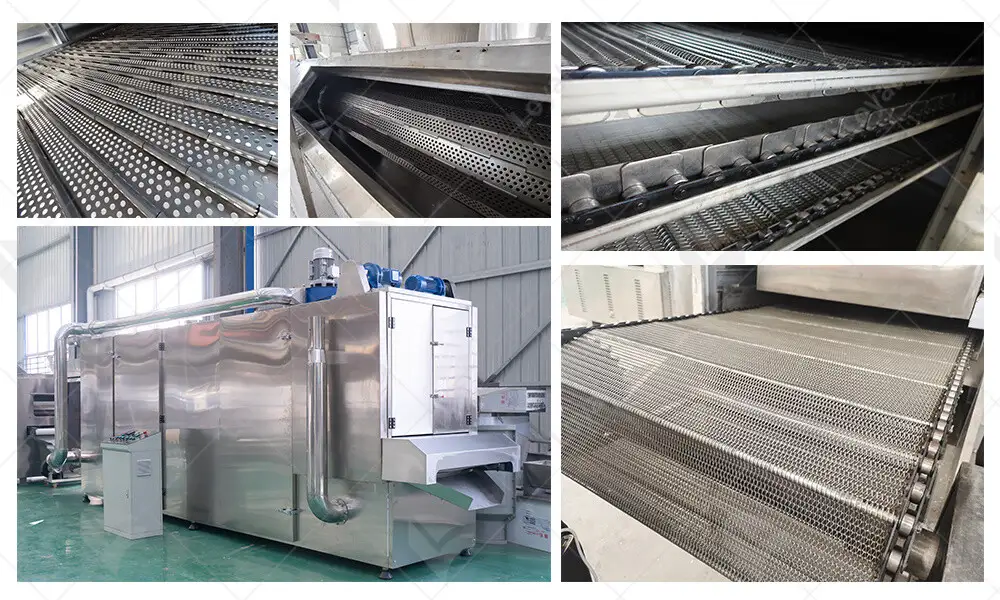
Selection and Sourcing of Raw Materials for Dog Food Production
When it comes to the selection and sourcing of raw materials for dog food production, manufacturers must prioritize quality, nutritional value, and sustainability. The ingredients used in dog food play a crucial role in determining the overall health and well-being of pets, making it essential to choose high-quality sources.
LOYAL Company and FEN Company are two prominent manufacturers known for their machinery in the pet food industry. Let's compare their offerings in various aspects:
Aspect | LOYAL Company's Machinery | FEN Company's Machinery |
Technology | Incorporates advanced automation | Features state-of-the-art processing |
Reliability | Known for reliability and durability | Renowned for robust performance |
Customization Options | Offers customizable solutions | Provides versatile configurations |
Efficiency | Optimized for maximum efficiency | Designed for high productivity |
Maintenance | Requires minimal maintenance | Designed for ease of maintenance |
Cost-effectiveness | Provides excellent value for investment | Offers competitive pricing |
LOYAL Company's machinery is distinguished by its advanced automation technology, which streamlines production processes and enhances efficiency. Their equipment is designed to handle various stages of dog food production with precision and reliability. Additionally, LOYAL offers customizable solutions, allowing manufacturers to tailor their equipment to specific requirements and preferences.
On the other hand, FEN Company's machinery boasts state-of-the-art processing capabilities, ensuring optimal performance and output. With versatile configurations, FEN's equipment offers flexibility to adapt to different production needs and scale operations accordingly. Despite the high level of sophistication, FEN's machinery is designed for ease of maintenance, minimizing downtime and ensuring continuous operation.
Both LOYAL Company and FEN Company provide machinery and equipment essential for dog food production lines. While LOYAL emphasizes advanced automation and customization options, FEN focuses on state-of-the-art processing and versatility. Manufacturers can choose between these two reputable companies based on their specific requirements, budget considerations, and production objectives.

Machinery and Equipment for Mixing and Blending Ingredients
In the realm of dog food production lines, the machinery and equipment used for mixing and blending ingredients are paramount. These components ensure the uniform distribution of nutrients and flavors, ultimately impacting the quality and palatability of the final product.
A crucial piece of machinery in this process is the mixer. Mixers come in various types, including paddle mixers, ribbon mixers, and tumbling mixers, each suited to different mixing requirements. These mixers employ rotating blades or paddles to thoroughly blend ingredients, achieving consistency in texture and flavor.
Blending equipment such as blenders and homogenizers play a vital role in achieving uniformity in the mixture. Blenders utilize high-speed rotating blades to mix ingredients quickly and efficiently, while homogenizers apply high pressure to break down particles and create a smooth, homogeneous blend.
The equipment used for mixing and blending ingredients in dog food production lines often incorporates advanced technology to optimize efficiency and precision. Automated systems control the mixing process, ensuring accurate measurement of ingredients and consistent mixing results batch after batch.
The machinery and equipment for mixing and blending ingredients in dog food production lines are essential for achieving the desired product quality and consistency. Manufacturers rely on a combination of mixers, blenders, and homogenizers, each tailored to specific mixing requirements, to create nutritious and palatable dog food products.
Extrusion Technology in Dog Food Production
Extrusion technology revolutionized the dog food production industry, offering efficient and versatile solutions for processing raw ingredients into finished products. In the context of dog food production lines, extrusion plays a pivotal role in shaping, cooking, and texturizing the final product.
The extrusion process involves forcing a mixture of raw ingredients through a specialized machine called an extruder. Inside the extruder, the mixture is subjected to high temperature and pressure, causing it to expand and undergo physical and chemical changes. As the mixture exits the extruder through a die, it is cut into specific shapes and sizes, forming the basis of the final dog food product.
One of the key benefits of extrusion technology is its ability to enhance the digestibility and palatability of dog food. The high temperature and pressure applied during extrusion help break down complex carbohydrates and proteins, making them more readily digestible for dogs. Additionally, the extrusion process can create a variety of textures and shapes, adding to the sensory appeal of the final product.
Furthermore, extrusion technology offers manufacturers greater flexibility in recipe formulation and product innovation. By adjusting parameters such as temperature, pressure, and moisture content, manufacturers can tailor the extrusion process to achieve specific nutritional profiles and texture characteristics.
Extrusion technology has become indispensable in the dog food production industry, enabling manufacturers to produce nutritious, palatable, and visually appealing dog food products efficiently and effectively. As dog food production lines continue to evolve, extrusion technology will undoubtedly remain a cornerstone of the manufacturing process.

Thermal Processing Methods for Dog Food Safety and Quality
In the realm of dog food production lines, thermal processing methods play a critical role in ensuring the safety and quality of the final product. These methods involve the application of heat to raw ingredients to eliminate harmful pathogens, extend shelf life, and enhance nutritional value.
One commonly used thermal processing method is cooking, which involves heating the raw ingredients to a specific temperature for a predetermined period. This process not only kills bacteria and other microorganisms but also improves the digestibility of proteins and carbohydrates. Cooking also helps to enhance the palatability and aroma of the final product, making it more appealing to dogs.
Another thermal processing method utilized in dog food production lines is drying. Drying involves removing moisture from the product through evaporation, thereby inhibiting the growth of bacteria and fungi. This process results in a longer shelf life and preserves the nutritional integrity of the ingredients. Additionally, drying helps to achieve the desired texture and crunchiness in the final product, enhancing its appeal to dogs.
Furthermore, thermal processing methods such as pasteurization and sterilization are employed to ensure the safety of dog food products. Pasteurization involves heating the product to a specific temperature for a short period to destroy harmful bacteria while preserving its nutritional value. Sterilization, on the other hand, involves subjecting the product to high temperatures for a longer period to eliminate all microorganisms, including spores.
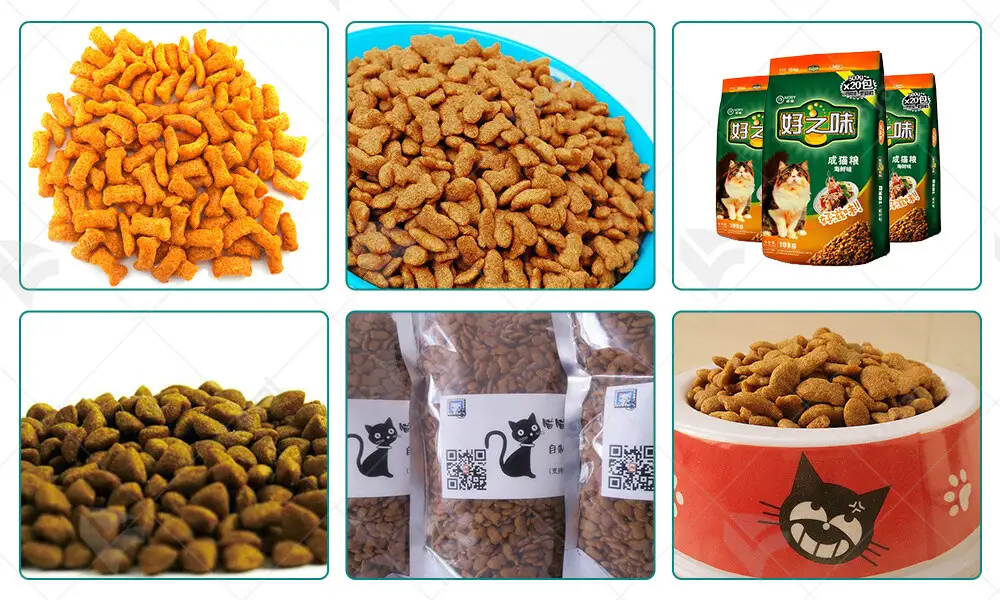
Packaging Solutions for Dog Food Products
Packaging plays a crucial role in preserving the freshness, flavor, and nutritional value of dog food products while ensuring their safety during storage and transportation. In dog food production lines, various packaging solutions are employed to meet the diverse needs of manufacturers and consumers alike.
One commonly used packaging solution for dog food products is flexible packaging, such as pouches and bags. Flexible packaging offers several advantages, including lightweight, space-saving, and cost-effective packaging options. Additionally, flexible packaging can be customized with features such as resealable zippers and tear-off tabs, enhancing convenience for pet owners.
Another popular packaging solution for dog food products is rigid packaging, such as cans and tubs. Rigid packaging provides excellent protection against moisture, oxygen, and other environmental factors, ensuring the freshness and quality of the product. Additionally, rigid packaging offers enhanced shelf visibility and branding opportunities, allowing manufacturers to differentiate their products in the market.
Furthermore, vacuum packaging is often used in dog food production lines to extend the shelf life of products by removing air from the packaging. This helps prevent oxidation and spoilage, preserving the flavor and nutritional integrity of the dog food.

Automation and Control Systems in Dog Food Production Lines
Automation and control systems play a crucial role in optimizing efficiency, consistency, and safety within dog food production lines. These systems utilize advanced technology to streamline operations, monitor processes, and ensure adherence to quality standards.
One key aspect of automation in dog food production lines is the integration of automated machinery and equipment. Automated mixers, extruders, dryers, and packaging machines work seamlessly together to handle various stages of the production process. These machines are equipped with sensors, actuators, and control interfaces that enable precise control and adjustment of parameters such as temperature, pressure, and speed.
Control systems such as Programmable Logic Controllers (PLCs) and Supervisory Control and Data Acquisition (SCADA) systems are employed to oversee and coordinate the operation of machinery in real-time. PLCs enable automated control of individual machines and processes, while SCADA systems provide a centralized platform for monitoring and managing the entire production line.
Automation in dog food production lines extends beyond machinery and equipment to encompass data-driven decision-making and optimization. Advanced analytics and machine learning algorithms analyze production data in real-time, identifying trends, anomalies, and opportunities for improvement. This enables manufacturers to make informed decisions and optimize processes to enhance efficiency, reduce waste, and ensure product quality.
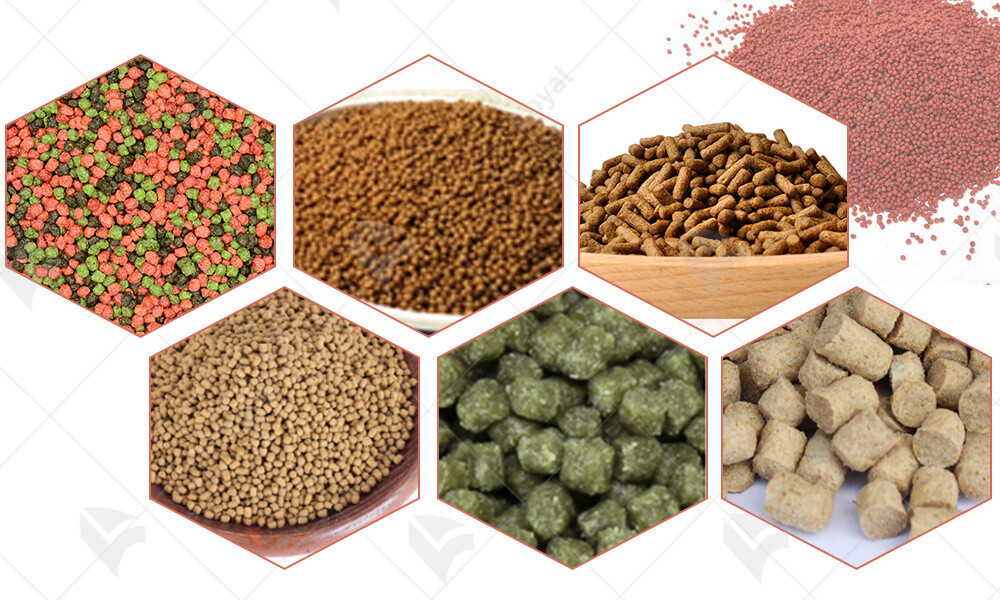
Quality Assurance and Food Safety Standards in Dog Food Manufacturing
Ensuring the quality and safety of dog food products is paramount in dog food manufacturing, necessitating strict adherence to quality assurance and food safety standards. These standards encompass various aspects of production, including ingredient sourcing, processing, packaging, and distribution.
One key aspect of quality assurance in dog food manufacturing is the implementation of Good Manufacturing Practices (GMPs). GMPs are a set of guidelines and procedures designed to ensure that products are consistently produced and controlled according to quality standards. This includes practices such as proper sanitation, hygiene, equipment maintenance, and personnel training.
Dog food manufacturers must comply with regulatory requirements and industry standards set forth by organizations such as the Food and Drug Administration (FDA) and the Association of American Feed Control Officials (AAFCO). These standards outline specific requirements for ingredients, labeling, nutritional adequacy, and safety testing to ensure that products are safe for consumption by pets.
Dog food manufacturers often implement Hazard Analysis and Critical Control Points (HACCP) plans to identify and mitigate potential food safety hazards throughout the production process. This involves conducting risk assessments, implementing control measures, and monitoring critical control points to prevent contamination and ensure product safety.
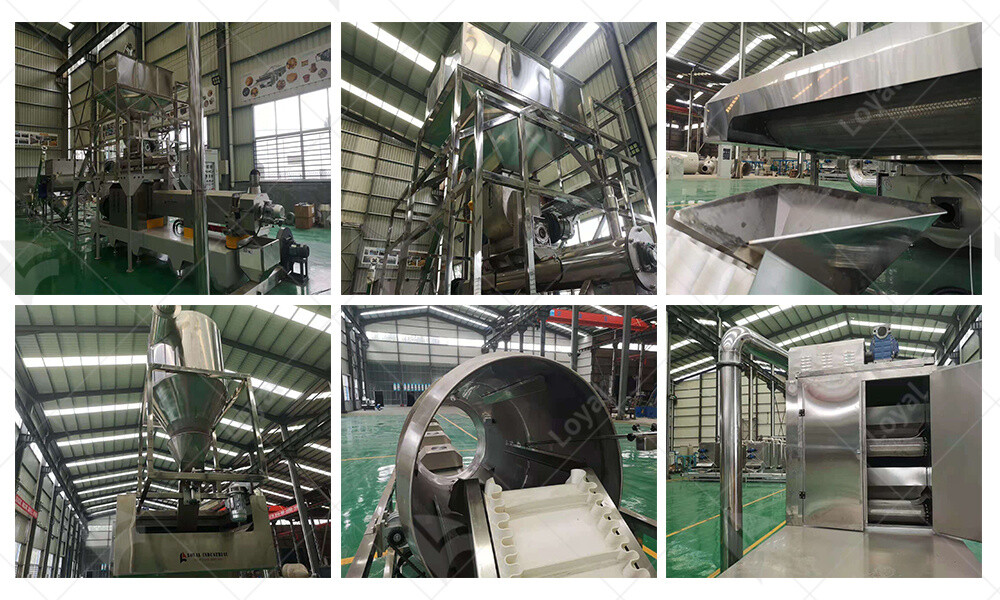
Future Trends and Innovations in Dog Food Production Technology
The future of dog food production technology is poised for exciting advancements and innovations, driven by evolving consumer preferences, technological advancements, and sustainability concerns. Several trends and innovations are expected to shape the future landscape of dog food production lines.
One prominent trend is the incorporation of sustainable practices and ingredients in dog food production. As consumers increasingly prioritize sustainability and environmental responsibility, manufacturers are exploring alternative protein sources, eco-friendly packaging materials, and energy-efficient production processes. Additionally, advancements in biotechnology and cellular agriculture hold promise for producing lab-grown proteins and sustainable ingredients for dog food.
Personalized nutrition and customization are expected to become more prevalent in dog food production lines. With the advent of technology such as DNA testing and nutritional profiling, manufacturers can tailor dog food formulations to meet the unique nutritional needs and preferences of individual pets. This customization not only enhances the health and well-being of pets but also fosters stronger bonds between pets and their owners.
The integration of smart technology and data analytics is expected to revolutionize dog food production lines. IoT-enabled sensors and devices can monitor production processes in real-time, detecting inefficiencies, optimizing resource utilization, and ensuring product quality. Machine learning algorithms can analyze vast amounts of data to identify trends, predict consumer preferences, and optimize production schedules.
In conclusion, the future of dog food production technology holds immense promise for innovation and advancement. By embracing sustainable practices, personalized nutrition, and smart technology, manufacturers can meet the evolving demands of consumers while ensuring the health, safety, and well-being of pets.
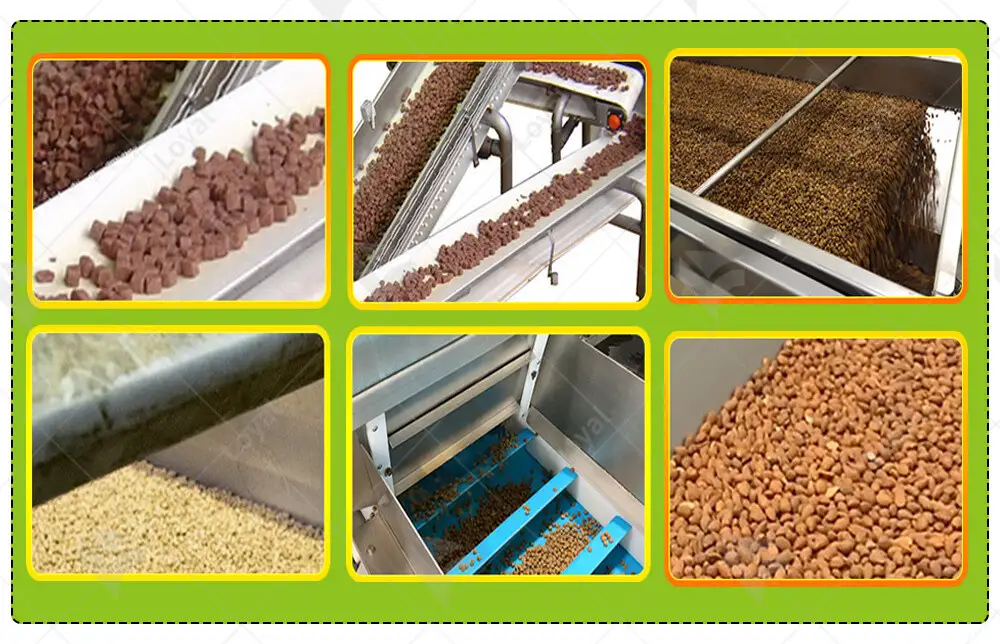
References
1. Food Engineering Magazine:www.foodengineeringmag.com
2. Food Processing Technology:www.foodprocessing-technology.com
3. International Food Information Council (IFIC) Foundation:www.foodinsight.org
4. Food Safety Magazine:www.foodsafetymagazine.com
5. American Society of Agricultural and Biological Engineers (ASABE):www.asabe.org









